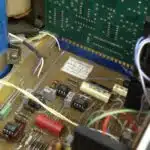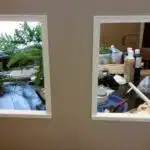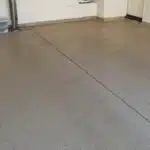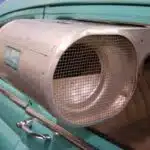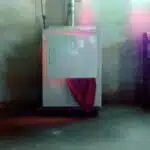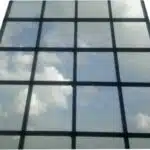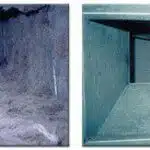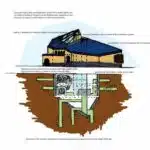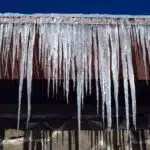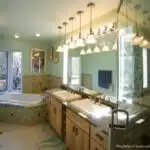Home insulation is an essential component in the effort to reduce energy consumption and maintain comfortable living conditions. Windows are a significant source of heat loss, and insulating them can go a long way in reducing energy bills. Proper window insulation can also enhance indoor comfort by reducing drafts, noise pollution, and condensation build-up.
Understanding how to insulate windows is crucial for homeowners who desire to improve their home’s energy efficiency. It involves identifying the right materials and techniques that will help seal any gaps around the window frame or glass panes. This article aims to provide practical tips on how to insulate windows effectively and efficiently. By following these tips, homeowners can significantly reduce their energy consumption, save money on utility bills, and enjoy a more comfortable living environment at home.
Understanding The Importance Of Window Insulation
Windows are the eyes of a home, allowing natural light and fresh air to enter. However, they can also be a significant source of energy loss. Understanding the importance of insulation is crucial in maintaining a comfortable and energy-efficient home. Proper window insulation helps reduce energy consumption, saves money on heating and cooling bills, and minimizes carbon footprint.
One of the benefits of energy efficiency is that it reduces greenhouse gas emissions from power plants. When less energy is consumed, fewer fossil fuels are burned to produce electricity. This not only benefits our environment but also supports our economy by reducing the need for expensive energy sources. Additionally, proper insulation ensures that heat remains trapped inside during cold months and outside during hot months.
The importance of insulation cannot be overstated as it plays a critical role in achieving optimal home comfort levels. Whether you’re looking to save money on utility bills or reduce your carbon footprint, window insulation is an effective solution. In the next section, we will discuss how to evaluate your home’s current level of energy efficiency before diving into various window insulation techniques to help you achieve your goals.
Evaluating Your Home’s Energy Efficiency
Understanding the Importance of Window Insulation is essential in improving the energy efficiency of your home. However, it is not enough to understand its importance; you must also assess its effectiveness. There are various ways to assess your home’s insulation, such as a thermal imaging camera and an energy audit.
Thermal imaging cameras are useful tools for identifying areas of heat loss in your home. They work by measuring infrared radiation emitted from the surface of objects, which allows them to detect temperature differences between different areas. By using a thermal imaging camera on your windows, you can identify which windows are poorly insulated and need attention. Energy audits, on the other hand, evaluate your home’s overall energy performance. They involve a comprehensive assessment of your home’s insulation, heating and cooling systems, lighting, and appliances. Energy audits provide a detailed report on how much energy your home consumes and where improvements can be made.
Assessing effectiveness is just the beginning; improving insulation is the next step towards achieving better energy efficiency in your home. Identifying areas of heat loss is crucial in this process as it helps you focus on specific areas that need attention. In the subsequent section, we will discuss how to identify areas of heat loss around windows and what steps you can take to improve insulation in these areas.
Identifying Areas Of Heat Loss
Identifying common issues with heat loss is the first step towards achieving optimal insulation for your home. One common issue is air leaks in windows and doors, which can lead to a significant loss of heat and increase your energy bills. Another issue is insufficient insulation in the attic or walls, allowing heat to escape through the roof and exterior walls.
Fortunately, there are several DIY solutions for heat loss that can be implemented. In addition to sealing air leaks with weatherstripping or caulking, adding insulation to the attic floor and walls can significantly reduce heat loss. Installing window film or thermal curtains can also help insulate windows and prevent drafts.
To further enhance your home’s insulation, consider these four items:
- Seal gaps around pipes, ducts, and electrical wires with spray foam or caulk to prevent air leaks.
- Install a programmable thermostat to regulate temperature settings and save on energy costs.
- Add draft stoppers at the bottom of doors to prevent cold air from seeping into your home.
- Use door sweeps to seal gaps between doors and floors.
By identifying common issues with heat loss and implementing these DIY solutions, you can improve your home’s insulation while reducing energy consumption and costs. Next, we will discuss choosing the right insulation materials for optimal results.
Choosing The Right Insulation Materials
- Insulation materials are an important part of ensuring a home is energy efficient, reducing energy loss and saving money on energy costs.
- Common insulation materials include fiberglass, cellulose, foam, and rock wool.
- Each type of insulation has a different R-value, which is a measure of its ability to resist heat flow.
- The cost of insulation materials varies depending on type, quantity, and quality of the material.
- Generally, higher R-value materials are more expensive, but can provide greater energy savings in the long run.
- When choosing insulation materials for a home, it is important to consider the type, R-value, and cost of the material to determine the best option for the specific application.
Types Of Insulation
To effectively insulate windows, it is important to understand the different types of insulation available in the market. Each type has its own pros and cons, and selecting the right one for your windows can make a significant difference in energy efficiency. Traditional fiberglass batt insulation is a popular option due to its affordability and easy installation. However, it may not be the best choice for windows as it can allow air leaks around the edges.
Another type of insulation that can be used for windows is spray foam insulation. It is highly effective in filling gaps and cracks around windows, offering better insulation than other types of materials. However, spray foam insulation can be expensive and sometimes challenging to install. In addition, it has been known to shrink over time, causing gaps that can reduce its effectiveness.
When selecting insulation material for your windows, consider the R value that measures its thermal resistance capacity. The higher the R value, the better it will insulate against heat loss or gain through your window panes. A good rule of thumb is to choose an R value between 3 and 5 for your windows. Overall, understanding the pros and cons of each type of insulation material will help you make an informed decision on which one suits your needs best.
In conclusion, choosing the right type of insulation material for your window frames can significantly improve your home’s energy efficiency while reducing heating and cooling costs. Consider factors such as cost-effectiveness, ease of installation, and effectiveness when making a decision on which type to use. Remember to choose an insulation material with an appropriate R value rating to ensure maximum energy savings without compromising comfort within your home environment.
R-Value Of Insulation
As a home insulation researcher, it is essential to understand the R-value calculation when selecting insulation materials. The R-value is a thermal conductivity measurement that determines how well the material can resist heat flow. The higher the R-value, the better the insulation’s ability to reduce heat transfer through walls, ceilings, or windows.
When choosing the right insulation material for your windows, it is crucial to consider its R-value rating. A good rule of thumb is to select an insulation material with an R-value between 3 and 5 for your windows. This rating ensures maximum energy savings without compromising comfort within your home environment.
In conclusion, understanding the importance of R-value in choosing the right insulation material for your windows will help you make informed decisions. By selecting an appropriate R-value rating, you can significantly improve your home’s energy efficiency while reducing heating and cooling costs. It is always best to consult with a professional installer or contractor to ensure proper installation and optimal performance of your chosen insulation material.
Cost Of Insulation
Transitioning from discussing R-value, another crucial aspect to consider when choosing the right insulation material for your home is the cost. As a homeowner, it is essential to weigh the benefits of insulation against its cost, as factors affecting cost can vary widely depending on the type of insulation material used and the size of your home. In this subtopic, we will explore different types of insulation materials and their corresponding costs to help you make an informed decision.
Factors affecting cost include insulation material type, installation method, and availability in your local area. Some materials may be more expensive than others upfront but offer long-term energy savings that can pay off over time. For example, spray foam insulation is one of the more costly options, but it provides excellent air sealing and thermal resistance. Fiberglass batts are cheaper but require professional installation to achieve optimal performance.
When it comes to cost-effective options, blown-in cellulose and fiberglass batts are among the most affordable choices for homeowners. Blown-in cellulose is made from recycled paper products and is known for its sound-proofing capabilities. Fiberglass batts are also inexpensive and easy to install, making them a popular choice for DIY projects. However, keep in mind that installing insulation incorrectly can lead to poor performance and higher energy bills in the long run.
In summary, while choosing the right insulation material for your home involves considering various factors such as R-value and effectiveness at reducing heat transfer, it is equally important to factor in costs. Understanding factors affecting cost such as material type, installation method, and availability can help you find a balance between affordability and efficiency. Ultimately, selecting a cost-effective option that suits your needs will not only reduce heating and cooling costs but also improve your overall comfort within your home environment.
Window Film As A Cost-Effective Option
Homeowners looking for an affordable way to insulate their windows might consider using window film. This cost-effective option can provide significant energy savings, and it is relatively easy to install. Window film works by reflecting heat back into the room, which reduces heat loss through the glass.
When installing window film, there are several techniques that can be used to maximize its effectiveness. First, it is important to choose high-quality film that is specifically designed for insulation. The film should be applied directly to the glass and sealed around the edges with tape or adhesive.
One of the main benefits of using window film is the cost benefit it provides. Compared to other methods of insulation, such as replacing windows or adding storm windows, window film is much more affordable. Additionally, installation is relatively simple and can be done without professional assistance. Overall, window film can offer significant savings on heating and cooling costs while also improving home comfort.
Moving forward, homeowners may also want to consider weatherstripping for improved sealing around their windows. This additional step can help prevent drafts and further reduce energy loss. By taking these steps towards efficient home insulation, homeowners can save money on utility bills while reducing their carbon footprint.
Weatherstripping For Improved Sealing
Draft:
Are you tired of feeling the cold breeze coming from your windows despite having them shut? Weatherstripping might be the solution for you. This is a process of sealing gaps around doors and windows to prevent air leaks and improve energy efficiency. Proper weatherstripping can help reduce your heating bill and create a more comfortable indoor temperature.
Before starting, it is important to identify where your home’s air leaks are. This can be done by conducting a home energy audit or by simply doing a visual inspection. Once identified, you can go ahead and purchase weatherstripping materials that fit the gaps in your doors and windows. There are several types of weatherstripping materials available including adhesive-backed foam tape, V-strip, door sweeps, and silicone caulk.
Cheap weatherstripping alternatives are also available if you’re on a tight budget such as using old clothes or towels as draft stoppers for doors or windowsills. However, it is important to avoid common weatherstripping mistakes such as leaving gaps between the material and surface or applying too much pressure which can cause damage to the window frames. By avoiding these mistakes and properly installing weatherstripping materials, you can enjoy a more comfortable living space while also reducing energy consumption.
Looking for long-lasting insulation? Caulking might be the next step for you.
Caulking For Long-Lasting Insulation
Weatherstripping is an effective way to seal air leaks around windows, but it may not be enough to provide complete insulation. For long-lasting and comprehensive insulation, caulking is also necessary. Caulking involves filling gaps, cracks, and holes in the window frame or between the window and the wall with a sealant material. This prevents air from leaking in or out of the home, which can help reduce heating and cooling costs.
There are different types of caulking materials available on the market, including silicone, latex, and acrylic. Each type has its own advantages depending on the application. Silicone caulk is best for areas that are exposed to moisture such as bathrooms or kitchens because it is water-resistant. Latex caulk is easy to apply and clean up with water while acrylic caulk is paintable after it dries. It’s important to choose the right type of caulking material for your specific needs.
Applying caulking correctly is essential for it to work effectively. Start by cleaning any debris or old caulking from the area you want to seal. Then, cut off the tip of the caulk tube at a 45-degree angle and insert it into a caulking gun. Apply steady pressure while moving the gun along the gap or crack you want to fill with a continuous bead of caulk. Use your finger or a smoothing tool to spread out and smooth over the caulk before it dries.
To further improve window insulation, installing draft stoppers can also be beneficial. These are strips of foam or rubber that can be attached along the bottom of a window sash to prevent drafts from entering through gaps between the sash and sill. With proper weatherstripping, caulking, and draft stoppers in place, homeowners can improve their window insulation significantly and enjoy greater energy savings throughout the year without compromising on comfort or indoor air quality.
Installing Draft Stoppers
To further increase the insulation of your windows, installing draft stoppers can be a simple and cost-effective solution. Draft stoppers, also known as draft snakes, are long tubes made of fabric filled with materials like rice or sand that can be placed at the bottom of doors and windows to prevent cold air from entering the room. While this DIY method is popular among homeowners, it’s important to consider its effectiveness in comparison to hiring a professional.
DIY draft stoppers can be easily made using materials found around the house. They are a great option for those on a tight budget and can provide some level of insulation for your windows. However, there are limitations to their effectiveness. DIY draft stoppers may not fit perfectly in the window frame or door, leaving gaps that still allow drafts to enter. Additionally, they may not last as long as professional-grade options.
Hiring a professional to install draft stoppers ensures precision and durability in insulation. Professionals have access to high-quality materials and tools that guarantee proper installation of drafts stoppers into your windows. Although it may come at an extra cost, it could save you money in energy bills in the long run by providing maximum insulation for your home. Ultimately, whether you choose DIY or professional installation depends on your budget and priorities.
In considering how best to insulate your windows, using insulated curtains for extra protection is another option worth exploring. These curtains contain layers of insulating material that help block out drafts and retain heat inside your home. In the next section, we will discuss how insulated curtains work and offer some tips on choosing the right ones for your needs.
Using Insulated Curtains For Extra Protection
Insulated curtains are an excellent addition to your home’s insulation strategy. They work by trapping air between the window and the curtain, creating a barrier that prevents heat loss or gain. Choosing curtains for insulation purposes requires some careful consideration. You need to select curtains that are made of insulating materials such as wool, thick cotton, or polyester.
When choosing curtains, you should also consider their thickness. Thicker curtains provide better insulation than thinner ones. Therefore, go for curtains that have multiple layers of fabric or a lining material such as flannel. Additionally, you should measure your windows before purchasing curtains to ensure they fit perfectly. This will help prevent any gaps that could allow cold air into your home.
Installing insulated curtains is relatively easy and requires only a few tools. First, you need to purchase curtain rods that can support the weight of the insulated curtains. Then, mount the rods above the window frame and attach them securely using screws or other appropriate hardware depending on the type of wall material. Once you have installed the rods, hang your insulated curtains onto them and adjust them accordingly.
Now that we’ve discussed how to use insulated curtains for extra protection against heat loss and gain let’s move on to some considerations for different types of windows in our next section.
Considerations For Different Types Of Windows
Double-hung windows are a popular choice due to their relative affordability and ease of installation, but they can be inefficient in terms of insulation unless designed with special features. Sliding windows provide superior insulation due to their ability to seal tightly against the frame, but they require frequent cleaning and maintenance to ensure the seal remains effective. Considerations for double-hung windows include the use of double- or triple-paned glass and insulated sashes to increase efficiency. For sliding windows, the use of weatherstripping and insulated frames are important factors to consider when selecting a window type.
Double-Hung Windows
Double-hung windows are a common type of window in many homes, but they can also be a source of energy loss if not properly insulated. One way to improve the energy efficiency of double-hung windows is by replacing the hardware. This is especially important for older windows that may have worn or outdated hardware. Upgrading to newer, more efficient hardware can help seal gaps and reduce drafts around the window frame.
Another important consideration when insulating double-hung windows is proper cleaning techniques. Over time, dirt, debris, and other contaminants can accumulate on the window surface and prevent proper sealing. Regular cleaning with a mild detergent and water can help remove these contaminants and ensure a tight seal between the sash and frame. Additionally, using weatherstripping or caulking around the edges of the window can further reduce air leakage.
Lastly, it’s important to consider adding insulation materials to the window itself for maximum efficiency. Double-pane windows are already insulated between the two panes of glass, but additional insulation options include applying low-emissivity (low-E) coatings or installing insulating shades or blinds. These options can help reduce heat transfer through the window and improve overall energy efficiency in your home. By considering these factors when insulating double-hung windows, you can maximize your home’s comfort while minimizing energy costs.
Sliding Windows
When it comes to insulating windows, sliding windows present their own unique challenges and considerations. Sliding windows are often found in homes with a more modern aesthetic and can come in various sizes and styles. Proper insulation is crucial for preventing air leakage, reducing energy costs, and maintaining a comfortable living environment.
Sliding window insulation can be achieved through both DIY methods or professional installation. DIY options include using weatherstripping or caulking around the edges of the frame to prevent air leaks. However, if the window frames are damaged or not properly sealed, professional installation may be necessary to ensure proper insulation. A professional contractor can evaluate the condition of your sliding windows and provide recommendations on which insulation options would work best for your specific needs.
Another important consideration when insulating sliding windows is the use of insulated glass. Insulated glass consists of two panes of glass with a layer of air or gas in between that acts as an additional barrier against heat transfer. Low-emissivity (low-E) coatings can also be applied to the glass to further reduce heat transfer and improve energy efficiency. Additionally, installing insulating shades or blinds can help regulate interior temperatures by blocking out sunlight during hot summer months and retaining warmth during colder winter months.
In conclusion, properly insulating sliding windows is essential for improving energy efficiency, reducing drafts, and maintaining indoor comfort levels. Whether you choose DIY methods or seek professional installation assistance, there are various options available to help maximize the effectiveness of your sliding window insulation efforts. By considering these factors when insulating your home’s sliding windows, you can save money on energy costs while enjoying a more comfortable living space year-round.
Diy Vs. Professional Installation
Like a butterfly emerging from its cocoon, insulation transforms your home into a comfortable and energy-efficient haven. Whether you’re looking to save money on energy bills or want to reduce your carbon footprint, insulating your windows is a smart choice. But should you handle the task yourself or hire a professional? Let’s explore DIY tips and professional benefits.
DIY tips for insulating windows can be found everywhere online, from YouTube videos to home improvement blogs. If you’re handy with tools and have some free time, this can be an affordable option. However, keep in mind that if done incorrectly, DIY insulation can lead to air leaks, moisture buildup, and mold growth. To avoid these problems, make sure you follow instructions carefully and use high-quality materials.
Professional benefits of window insulation are numerous. Professional installers have access to specialized tools and equipment that ensure proper installation and maximum efficiency. They also have experience working with different types of windows and can recommend the best insulation materials for your specific needs. In addition, hiring a professional saves you time and effort that you could spend on other tasks.
- Professional installers use thermal imaging cameras to detect air leaks
- DIY insulation kits often come with low-quality materials
- Professional installation ensures warranties are valid
- DIY projects may violate local building codes
- Professionals offer free consultations
In summary, both DIY insulation and professional installation have their pros and cons. If you decide to go the DIY route, make sure you research extensively before starting the project. On the other hand, hiring a professional gives you peace of mind knowing that your insulation will be properly installed by experienced technicians who stand behind their workmanship. Next up: maintenance tips for long-term insulation performance!
Maintenance Tips For Long-Term Insulation
Proper maintenance is crucial to ensure long-term insulation of your windows. One of the first decisions you’ll have to make is whether to do it yourself or hire a professional. If you’re experienced in home improvement projects, DIY may be the best route for you. However, if you’re not confident in your skills or don’t want to risk damaging your windows, it’s best to seek professional help.
When insulating your windows, there are common mistakes that you should avoid. One such mistake is using the wrong type of insulation material. Using foam weatherstripping on double-hung windows, for example, can cause them to become stuck when opened or closed. Another mistake is simply ignoring the importance of maintaining and checking your window insulation regularly.
By properly maintaining and inspecting your window insulation over time, you can measure energy savings and make any necessary adjustments. This will help ensure that your windows remain well-insulated for years to come. In the next section, we’ll discuss how to measure energy savings and determine if additional improvements are necessary.
Measuring Your Energy Savings
Imagine that you’ve recently insulated your windows to improve your home’s energy efficiency. Now, you’re curious about how much money you can save on your energy bills. Calculating savings can be a bit tricky, but there are several ways to estimate how much insulation will reduce your energy costs.
One way to measure the impact of window insulation is to conduct an energy audit. During an energy audit, a professional will evaluate your home’s overall energy usage and identify areas where improvements could be made. They may use specialized equipment like thermal imaging cameras or blower door tests to detect air leaks and other sources of heat loss. By comparing your pre-insulation and post-insulation energy bills, you can see how much money you’ve saved over time.
Another method for calculating savings is to use online calculators or software programs designed for this purpose. These tools typically take into account factors like the size and type of windows in your home, as well as the local climate and cost of energy. While they may not be as accurate as an in-person audit, they can give you a rough estimate of how much insulation will impact your energy costs.
Energy audit tips include scheduling the audit during a time when your windows are closed so that the auditor can accurately detect any drafts or air leaks. It’s also important to gather any relevant information about your home, such as its age, size, and insulation type, before the audit takes place. This will help the auditor make more informed recommendations for improving your home’s overall energy efficiency.
As we have seen above, measuring your energy savings after insulating windows is important to determine if it was worth it financially or not. Conducting an energy audit or using online calculators are two methods that can provide an estimation about the amount of savings one could expect after insulating their windows. However, there are other ways to improve energy efficiency in your home that go beyond window insulation alone.
Other Ways To Improve Energy Efficiency In Your Home
Measuring your energy savings is an important first step in achieving greater energy efficiency in your home. However, it’s just the beginning. There are many other ways to improve energy efficiency and reduce energy costs, starting with smart thermostats. These devices can be programmed to automatically adjust temperature settings based on your schedule and preferences, helping you save money on heating and cooling.
Another way to improve energy efficiency is by investing in energy efficient appliances. From refrigerators and washing machines to dishwashers and air conditioners, there are many options available that can help you save money on your utility bills. In addition to reducing your energy consumption, these appliances may also qualify for rebates or other incentives from your local government or utility provider.
In conclusion, achieving energy savings and improved comfort with window insulation is a smart investment for any homeowner looking to reduce their carbon footprint while also saving money on their utility bills. By measuring your energy savings, investing in smart thermostats and energy efficient appliances, you can take steps towards a more sustainable future while enjoying increased comfort and lower costs. With the right approach and a little bit of effort, it’s possible to make significant improvements in the energy efficiency of your home without sacrificing style or comfort.
Conclusion: Achieving Energy Savings And Improved Comfort With Window Insulation
According to the U.S. Department of Energy, heat gain and loss through windows account for up to 30% of a home’s energy usage. This means that insulating your windows can have a significant impact on reducing energy costs and improving comfort levels. The benefits of window insulation are numerous, ranging from lower utility bills to a quieter indoor environment.
One common mistake when insulating windows is not properly sealing gaps or cracks around the frame. This can lead to air leaks and reduce the effectiveness of the insulation. It is important to take the time to thoroughly inspect each window and use appropriate materials, such as weatherstripping or caulking, to seal any openings.
Another mistake is choosing the wrong type of insulation for your specific needs. For example, while bubble wrap may be an inexpensive option, it may not provide adequate insulation for extremely cold climates. It is important to research different types of insulation and consider factors such as climate and window size before making a decision.
By properly insulating your windows, you can achieve energy savings and improved comfort in your home. Avoiding common mistakes such as improper sealing or choosing the wrong insulation type can ensure that you get the most out of your efforts. Take action today by exploring different options for window insulation and start enjoying the benefits it provides.
Conclusion
Window insulation is an essential component of any home’s energy efficiency strategy. It not only leads to significant savings on your energy bills but also improves the comfort level inside your home. Before embarking on a window insulation project, it’s crucial to evaluate your home’s energy efficiency and identify areas of heat loss.
Choosing the right insulation material is equally important. Window film is a cost-effective option that can significantly reduce heat loss and improve the insulating properties of your windows. Long-term maintenance and regular cleaning are also necessary to ensure optimal performance.
By measuring your energy savings, you can determine the effectiveness of your window insulation project. Remember that there are other ways to improve energy efficiency in your home, such as upgrading insulation in walls and attics or installing weather stripping around doors and windows.
In conclusion, achieving energy savings and improved comfort with window insulation requires careful planning, research, and attention to detail. As a homeowner or researcher, it’s important to explore all options available to you before making a decision. With proper installation and maintenance, you can create a more efficient and comfortable living space for yourself and your family.
Image Credits
- “Attic Window and Insulation – Strawbale House Build in Redmond Western Australia” by Red Moon Sanctuary (featured)












